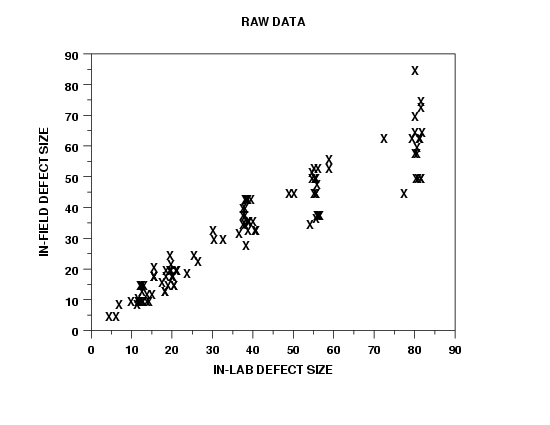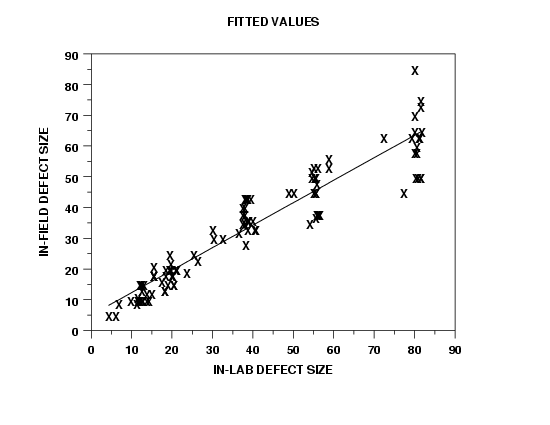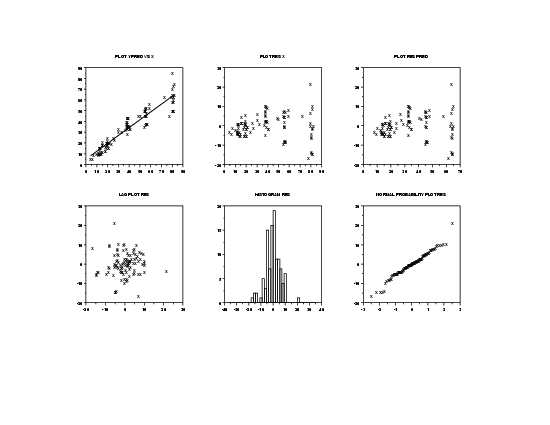

|
|
|
DATAPLOT Command Mode
Dataplot Design Goals
|
The Dataplot language was designed with the goals of providing
scientists and engineers with
|
Three Core Dataplot Commands
|
The Dataplot command language was developed to provide a
high-level, English-syntax, and self-descriptive language to
perform these functions. The three core Dataplot commands are
|
Advantages of a Command Line Interface
|
Graphical user interfaces are increasingly becoming the
preferred type of user interface for many users. Dataplot
provides an alpha version of a graphical
user interface (GUI) on some platforms. Graphical
interfaces are helpful to new and casual users. However, a
command language still provides some important advantages.
Specifically,
|
Dataplot Commands Available from GUI
|
The choice between using the GUI interface or the command line
interface is often a matter of taste. One important feature of
the Dataplot graphical interface is that you can still enter
any Dataplot command by simply starting to type it from the
keyboard.
|
Example of Dataplot Command Interface Step 1: Set the Graphics
Devices and Read the Data
|
|
As an example of using the command language to set your graphics device to an X11 terminal, read in a set of data, perform some basic plots and fits, and then print a Postscript version of the plots, you could enter something like the following
ECHO ON DEVICE 1 X11 DEVICE 2 POSTSCRIPT SKIP 25 READ BERGER1.DAT Y X
Dataplot Output
|
|
THE ECHO SWITCH HAS JUST BEEN SET TO ON
**************************
** DEVICE 1 X11 **
**************************
DEVICE -- 1
I/O UNIT -- 6
MANUFACTURER --X11
MODEL --
POWER --ON
CONTINUITY --ON
COLOR --ON
HORIZONTAL PIXELS-- 550
VERTICAL PIXELS-- 425
*********************************
** DEVICE 2 POSTSCRIPT **
*********************************
DEVICE -- 2
I/O UNIT -- 43
MANUFACTURER --POST
MODEL --
POWER --ON
CONTINUITY --ON
COLOR --OFF
HORIZONTAL PIXELS-- 3130
VERTICAL PIXELS-- 2380
FILE NAME (LOCAL)--dppl1f.dat
*********************
** SKIP 25 **
*********************
THE NUMBER OF HEADER LINES TO BE SKIPPED
HAS JUST BEEN SET TO 25
**********************************
** READ BERGER1.DAT Y X **
**********************************
THE NUMBER OF HEADER LINES
BEING SKIPPED = 25
INPUT DATA FILE SUMMARY INFORMATION--
INPUT UNIT DEVICE NUMBER = 31
INPUT FILE COLUMN LIMITS = 1 132
INPUT FILE ROW LIMITS = 1 INFINITY
NUMBER OF HEADER LINES SKIPPED = 25
NUMBER OF DATA LINES READ = 107
NUMBER OF VARIABLES READ = 2
THE SCANNED REGION OF THE FIRST DATA LINE READ =
18 20.2 1
THE SCANNED REGION OF THE LAST DATA LINE READ =
45 49.0 6
VARIABLE COLUMN OBS/VARIABLE
Y 1 107
X 2 107
Example of Dataplot Command Interface Step 2: Plot the Data
|
And now enter the commands
|
Y1LABEL IN-FIELD DEFECT SIZE X1LABEL IN-LAB DEFECT SIZE CHARACYER X LINE BLANK PLOT Y X
Dataplot Output
|
These commands generate the following output.
|
****************************
** TITLE RAW DATA **
****************************
THE TITLE HAS JUST BEEN SET TO
RAW DATA
******************************************
** Y1LABEL IN-FIELD DEFECT SIZE **
******************************************
THE LEFT VERTICAL AXIS LABEL HAS JUST BEEN SET TO
IN-FIELD DEFECT SIZE
****************************************
** X1LABEL IN-LAB DEFECT SIZE **
****************************************
THE FIRST HORIZONTAL AXIS LABEL HAS JUST BEEN SET TO
IN-LAB DEFECT SIZE
*************************
** CHARACYER X **
*************************
CHARACTER 1 HAS JUST BEEN SET TO X
************************
** LINE BLANK **
************************
LINE 1 HAS JUST BEEN SET TO BLAN
**********************
** PLOT Y X **
**********************

Example of Dataplot Command Interface Step 3: Fit the Data
and Generate Residuals Plot
|
And now enter the commands
|
TITLE FITTED VALUES PLOT Y PRED VS X TITLE AUTOMATIC X1LABEL Y1LABEL 6-PLOT Y X QUIT >lpr -P<printer-id> dppl1f.dat
Dataplot Output
|
These commands generate the following output.
|
****************************
** LINEAR FIT Y X **
****************************
LEAST SQUARES POLYNOMIAL FIT
SAMPLE SIZE N = 107
DEGREE = 1
REPLICATION CASE
REPLICATION STANDARD DEVIATION = 0.6112687111D+01
REPLICATION DEGREES OF FREEDOM = 29
NUMBER OF DISTINCT SUBSETS = 78
PARAMETER ESTIMATES (APPROX. ST. DEV.) T VALUE
1 A0 4.99368 ( 1.126 ) 4.4
2 A1 0.731111 (0.2455E-01) 30.
RESIDUAL STANDARD DEVIATION = 6.0809240341
RESIDUAL DEGREES OF FREEDOM = 105
REPLICATION STANDARD DEVIATION = 6.1126871109
REPLICATION DEGREES OF FREEDOM = 29
LACK OF FIT F RATIO = 0.9857 = THE 46.3056% POINT OF THE
F DISTRIBUTION WITH 76 AND 29 DEGREES OF FREEDOM
COEF AND SD(COEF) WRITTEN OUT TO FILE DPST1F.DAT
SD(PRED),95LOWER,95UPPER,99LOWER,99UPPER
WRITTEN OUT TO FILE DPST2F.DAT
REGRESSION DIAGNOSTICS WRITTEN OUT TO FILE DPST3F.DAT
PARAMETER VARIANCE-COVARIANCE MATRIX AND
INVERSE OF X-TRANSPOSE X MATRIX
WRITTEN OUT TO FILE DPST4F.DAT
*********************************
** TITLE FITTED VALUES **
*********************************
THE TITLE HAS JUST BEEN SET TO
FITTED VALUES
******************************
** PLOT Y PRED VS X **
******************************

*****************************
** TITLE AUTOMATIC **
*****************************
THE TITLE HAS JUST BEEN SET TO
AUTOMATIC
*********************
** X1LABEL **
*********************
THE FIRST HORIZONTAL AXIS LABEL HAS JUST BEEN SET TO
*********************
** Y1LABEL **
*********************
THE LEFT VERTICAL AXIS LABEL HAS JUST BEEN SET TO
************************
** 6-PLOT Y X **
************************

|
Privacy
Policy/Security Notice
NIST is an agency of the U.S.
Commerce Department.
Date created: 06/05/2001 | ||